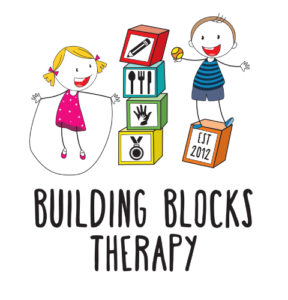Cutting skills are very important for a child’s fine motor skill development and often start at a young age.
Cutting skills are quite complex and it takes time and practice for children to develop and master this skill.
Using scissors correctly helps to:
- Build hand and finger strength
- Develop skills for fingers to work together
- Independent movements of each finger
- Increased hand and finger dexterity
- Promote functional grasp
- Increase focus and attention to a task
- Promote bilateral coordination – necessary to hold scissors in one hand and hold paper in the other.
- Promote eye-hand coordination – required when cutting along a line
Scissor skills can help build hand and finger strength, develop skills necessary for fingers to work together which is also required to promote a functional pencil grasp which can increase pencil control and overall handwriting.
Tips for Ensuring your Child is Using Scissors Correctly:
- Ensure your child is sitting appropriately on a chair and at a table (not slouching).
- Ensure thumb, index and middle fingers are through the scissor holes or thumb and middle finger with index finger on outside of scissors for support. There are different ways to hold scissors correctly depending on the scissors (see below).
- Practice action of opening and closing scissors prior to properly cutting paper.
- Ensure thumb is facing upwards when using scissors to cut paper.
- Encourage your child to hold the paper off the table with helper hand.
- Practice, practice, practice – start with practicing cutting straight lines and curved lines, progress to circles and spirals and basic shapes such as squares and triangles.
There are multiple different ways to hold scissors correctly depending on whether the scissors have round and oval holes. See photo below showing different ways to hold scissors depending on if scissors have 1 round and 1 oval hole, 2 oval holes or 2 round holes.

It is also important that left-handed children always use left-handed scissors as the blades are attached differently and impact the child’s ability to see the line or where they are cutting.
Scissor Skill Progressions:
- Learning to hold scissors (1.5 to 2 years old) – often using plastic scissors and opening and closing the blades using two hands.
- Opening and closing scissors (2 – 2.5 years old) – great time to practice with playdough and tearing paper.
- Once child has mastered opening and closing the scissors they can move on to snipping the paper.
- Snips paper moving forward (3 years old) – making snips in paper while moving scissors forward.
- Using helper hand (3 – 3.5 years old) – use of ‘helper’ / non-dominate hand to hold and turn the paper while cutting.
- Cutting straight lines (3 -3.5 years old) – moving scissors along a straight line, accuracy is still a work in progress.
- Cutting along curved lines (4 years old) – able to cut along a relatively wide curved line.
- Cuts circle shape (4 years old) – able to cut out circle shapes, accuracy is still a work in progress.
- Cuts square shape (4.5 – 5 years old) – a child can cut out a square shape.
- Cuts complex shapes (between ages of 5-6) – able to cut more complex shapes such as triangles and figures.
It is important to remember that these are approximate average age range to develop and master these skills. Some children may develop these skills earlier or later compared to the average age.
Tips if Your Child is Struggling with Developing Cutting Skills:
- Use hand over hand assistance while your child is starting to learn this skill.
- Use spring loaded scissors as this can help with the action of opening the scissors.
- Highlight the line where child needs to cut so that this stands out for them.
- Using play dough scissors and snipping play dough when staring to learn the skill.
- Holding playdough / paper for child so that they can focus on opening and closing motion of scissors.
- Modelling this action for your child to watch and then copy.

References:
Dena Bishop. (2018). What are the benefits of cutting with scissors for young children? https://www.continued.com/early-childhood-education/ask-the-experts/what-benefits-cutting-with-scissors-22719
OT Mom Learning Activities. (2019). Scissor Cutting. https://www.ot-mom-learning-activities.com/scissor-cutting.html
Growing Hands on Kids. (2018). Scissor Skills Development Checklist for Ages 2-6. Retrieved from https://www.growinghandsonkids.com/scissor-skill-development-checklist-for-ages-2-6.html
The OT ToolBox. (2019). Scissor Skills. Retrieved from https://www.theottoolbox.com/scissor-skills/
If you feel that your child would benefit from Occupational Therapy sessions to work on cutting skills, please contact the Building Blocks Therapy Clinic for more information.
Carly Pettingill
